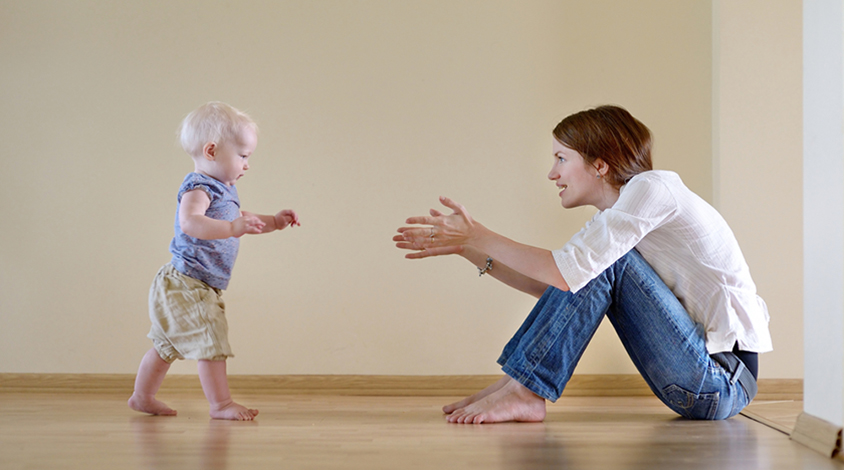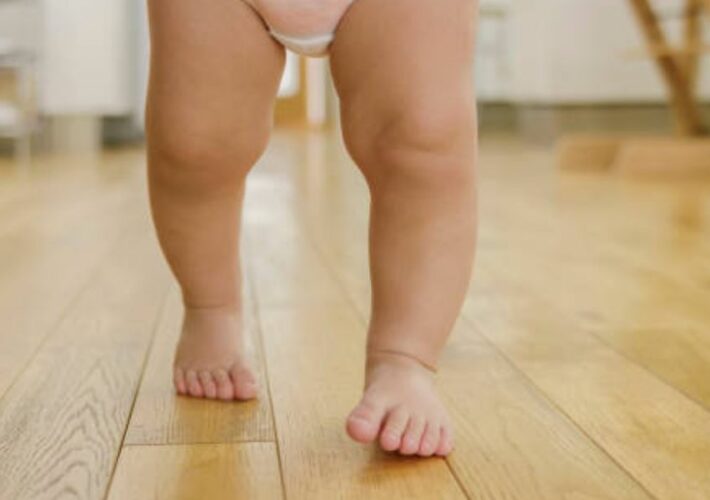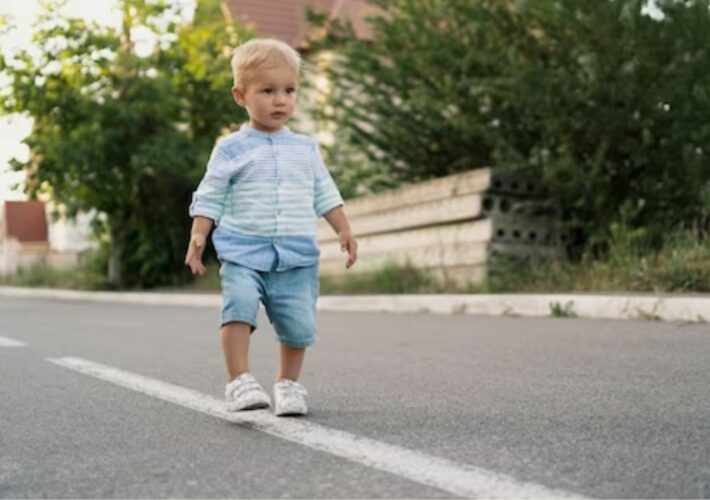Normal healthy children vary in their pattern of gait development. Deviation from parents’ expectation and comparison with peers may lead to anxiety and consultation with a doctor. Understanding normal gait development in children can help parents recognize when their child may need additional support or intervention from a healthcare professional, such as a physical therapist.
TL;DR – the highlights:
- gait development in children is a complex process involving several systems, including the musculoskeletal, nervous, and sensory systems
- as children learn to walk, they gradually develop more efficient and stable postural alignment, which reduces the risk of falls and injuries
- in the early stages of walking, children rely on a wide base of support and a high cadence, which gradually narrows and slows down as they become more skilled
- children typically learn to climb stairs on all fours before transitioning to bipedal walking
What is important for gait development
Gait is the way a person walks. It involves complex coordination of muscle movements, balance, and sensation. As children grow and develop, their gait changes and matures in a predictable sequence. The first year of life is an important time for infants to develop the ability to bear weight on their legs and learn to crawl. This is the foundation for the development of more advanced motor skills, such as walking. By 10 months of age, children begin to pull to stand and take their first steps. Their gait during this period is characterized by wide-based, unstable movements and a limited ability to balance.
As children continue to grow and develop, they begin to improve their balance and coordination. Between the ages of 2 and 4, children learn to walk with a narrower base of support and start to develop a heel-toe pattern. They also learn to walk up and down stairs and begin to run. By age 5, most children develop mature gait patterns. They are able to walk with a heel-toe pattern and have a smooth, coordinated gait. They can also run, jump, and climb stairs with ease.
Independent standing and cruising
By 10 months of age, the child pulls to stance at furniture and begins stepping sideways while holding on to the furniture. This supported walking is called cruising.1 The base of support is relatively wide and the child walks with slightly bent hips and knees. Once standing at furniture, the child will play for a long time, going back and forth between the floor and the furniture, squatting, and rising to stand repeatedly.
The child eventually starts reaching for other pieces of furniture to move around the room. With all this movement, he or she strengthens the muscles and hip and knee flexion decreases. The child can gradually lift one or the other hand from the support while still maintaining balance. Often, as the child cruises around the furniture and reaches for the next piece of furniture, he or she briefly stands and even takes a step or two without support from either arm. However, when walking forward without furniture for support, the child still needs someone to hold on to, but they are fast approaching the day when they will walk forward without the need for support.
NOTE: Even though the child walks, supported by holding onto furniture or someone’s hand, the plantar grasp reflex may still be seen at 10 months of age, although it’s significantly reduced and present inconsistently. The plantar grasp reflex is manifested by curling the toes.2
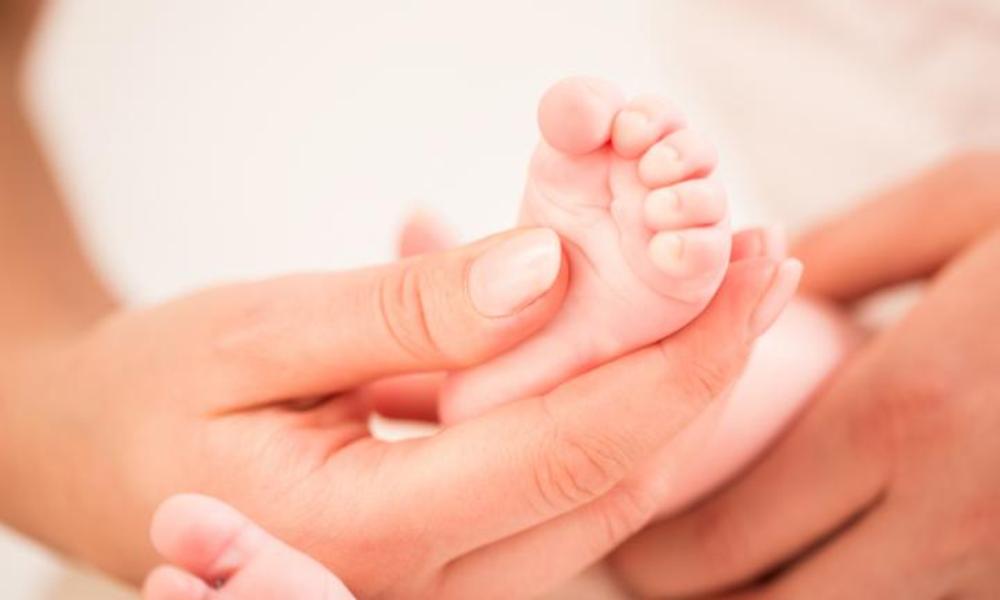
Taking first steps
Independent forward walking generally occurs between 10 and 15 months of age, usually around 12 months.1 This stage of gait development is characterized by a wide base of support, unstable movements, and limited ability to balance. Toddlers tend to walk with their feet turned out and their knees bent, which helps stabilize their movements. They don’t have heel strike initially, and the feet are still flat.1
NOTE: The flat pad doesn’t disappear completely until about 2 years of age, when the longitudinal arches become visible.1
As they take their first steps, they tend to take shorter, slower steps and can use their arms for balance. At first, they hold their arms in a high guard position to increase stability against gravity. Gradually the arms relax and hang by the child’s sides. Over time, they achive reciprocal arm swing during gait.1
During this stage of development, children also develop their ability to change direction and react to obstacles. They may stumble or trip frequently as they learn to navigate their environment. It’s important to note that at this stage, children are still learning to coordinate their movements, so some degree of instability is expected and considered normal.
Becoming more confident when walking
Between the ages of 2 and 4, children continue to develop their gait patterns. They start to walk with a narrower base of support and develop a heel-toe pattern, which is considered a more mature gait pattern.1 The lower limbs are more aligned and the child walks with more extended knees. Children in this age range also start to learn to walk up and down stairs and begin to run. This period of gait development is characterized by improved balance and coordination.
As children learn to navigate stairs and uneven surfaces, they become more confident in their movements and start to explore their environment more. They may start climbing, jumping, and playing games that involve running. At this stage, children are also more aware of their surroundings and respond better to obstacles and a changing environment.
By the time children reach the age of 4, they can usually run, jump and climb stairs with ease. They are also able to maintain balance and stability while performing complex activities, such as running, jumping, and skipping. By age 5, most children develop mature gait patterns.
Gait parameters
As children grow and develop, their postural alignment and gait parameters undergo changes. With practice and increasing strength, postural alignment improves with less hip abduction and external rotation, while hip and knee extension increases and the base of support narrows.3
In addition to postural alignment, there are several other gait parameters that change with growth and maturation. One such parameter is cadence, which is the number of steps a child takes per minute. In their early years, children take more steps per minute due to less strength and stability in the hip muscles. As they develop, their cadence decreases, resulting in more time spent in single limb support.3
Another important gait parameter is velocity, which is the distance covered in a certain time. Children’s gait velocity starts low and increases with age due to an increase in stride and step length. This increase in velocity and single limb stance time is a result of increasing strength and balance abilities, and lengthening of the lower limbs.3
| Gait parameter | 1 year of age | 3 years of age |
|---|---|---|
| Base of support | wider | narrower |
| Step length | 7.87 in (20 cm) | 12.99 in (33 cm) |
| Stride length (double the step length) | 15.74 in (40 cm) | 25.98 in (66 cm) |
| Single limb stance | 32% of gait cycle | 35% of gait cycle |
| Cadence (step frequency) | 180 steps per minute | 154 steps per minute |
| Velocity (speed) | 23.62 in/sec (60 cm/sec) | 41.34 in/sec (105 cm/sec) |
Stair climbing
Stair climbing is an important aspect of a child’s development as it requires coordination, balance, and strength. The stairs are quite a challenge for little ones, as they are quite high for them. Initially, most children learn to ascend and descend stairs while in a quadruped position, crawling on their hands and knees.1 They may then attempt to descend the stairs head-first, which can be dangerous without proper supervision. However, with guidance and coaching from caregivers, children quickly learn to descend the stairs backward on their hands and knees, which is a safer approach.
As children grow and develop, they will gain the necessary strength and coordination to climb stairs using an alternating foot pattern. Young children usually take one step at a time while holding on to a railing or the hand of an adult. As they grow, they develop the ability to alternate their feet when ascending and descending stairs. By the age of 3, most children can climb stairs with alternating feet and without the help of an adult.1
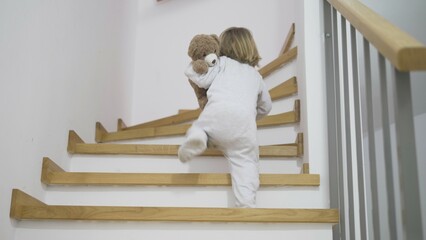
It’s important to note that each child is unique, and some children may take longer to reach these milestones or may have difficulty with certain aspects of gait development. However, with appropriate support, most children will achieve normal gait development. It’s also important for you, the parent, to understand that even if your child reaches all the normal milestones for gait development, there may still be small variations in their gait that are considered normal. However, if you notice any changes in your child’s gait, such as limping or a loss of balance, you should consult with a healthcare professional.
REFERENCES:
- McKeogh Spearing E, Pelletier ES, Drnach M. Tecklin’s Pediatric Physical Therapy, 6th ed. Wolters Kluwer, 2022
- Illingworth RS. The Development of the Infant and Young Child: Normal and Abnormal. Churchill Livingstoe, 1980
- Long TM, Toscano K. Handbook of Pediatric Physical Therapy. Lippincott Williams & Wilkins, 2001

